The Devil is in the Details
Exploring the impact of design choices in sexual harassment e-trainings and their effect on perceived messenger integrity and training effectiveness.

Study motivation
Researcher-Practitioner Collaboration
Consulting Project(s) $\Rightarrow$ Questions about Characters/Format
Collaboration on Training Design $\Rightarrow$ Custom Manipulation Materials
Question
How do design choices in sexual harassment e-trainings affect the perceived integrity of the messenger and the effectiveness of the training?
We experimentally explore:
- Trainer's gender-occupation congruence
- Media richness (text vs. video)
Why this is important
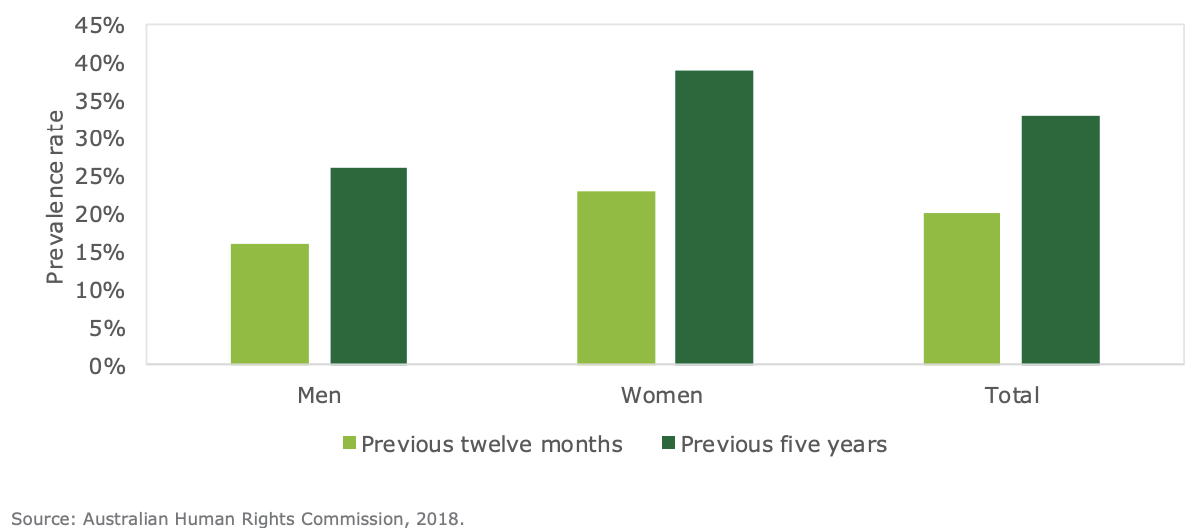
Productivity loss from sexual harassment is estimated to be $\$$2.62 billion in 2018 ($\$$1053 per victim).
Experimental design
2x2x2 between subjects
- Training medium (text-based vs. video-based)
- Trainer sex (male vs. female)
- Trainer expertise (law vs. HR)
Sample of 210 undergraduate subjects (26/cell)
Commercial training product
- Designed for undergraduate interns
- Professional actors similar across non-treatment characteristics
- Identical staging and content across treatments
- Other likely gender-based biases (e.g., competence) were controlled via a profile.
Constant trainer profiles

Session procedure
- Subjects randomly assigned to one of the eight treatments.
- Provided the messenger profile.
- Watched/read a training excerpt on quid pro quo sexual harassment (4.5 min).
- Completed a calibrated survey about their perceptions of trainer integrity.
- Paid a flat $\$$5 show up fee $+\$$10 if passed attention checks.
Survey Measures
- Perceived Messenger Integrity
- Backlash Attitudes
- Identity Threat Reactions
- Sexual Harassment Training-Related Knowledge
- Myth-Based Attitudes about Sexual Harassment
- Transfer Motivation
- Bystander Reporting Intentions
- Motivation to Participate in Future Sexual Harassment Training Sessions
- Sexual Harassment Identification
Theoretical motivation: media
- Motivation to learn common predictor of training effectiveness.
- SH Training usually lacks a job-related basis.
- Media richness alternative source of motivation.
(Naive) Hypothesis 1
SH training effectiveness will be greater for e-training with a high media rich format (e.g., video-based) than for e-training with a low media rich format (e.g., text-based).

Theoretical motivation: trainer integrity.
Rich media is associated with greater trust and perceived integrity of an information source.
- Particularly important in contexts related to moral issues like sexual harassment.
Hypothesis 2
SH training effectiveness will be mediated by perceived trainer integrity.

Media rich format (e.g., video-based) $\Rightarrow$ greater perceived trainer integrity
Gender-occupation incongruence
Two types of legally qualified messengers for SH training:
- HR professionals (relatively female led)
- Lawyers (relatively male led)
Male HR and female lawyers are more likely to be perceived as "disrupters" and therefore given lower perceived integrity.
Hypothesis 3
The interaction between messenger gender-occupation incongruence and media richness is mediated through perceived messenger integrity to affect training effectiveness outcomes.

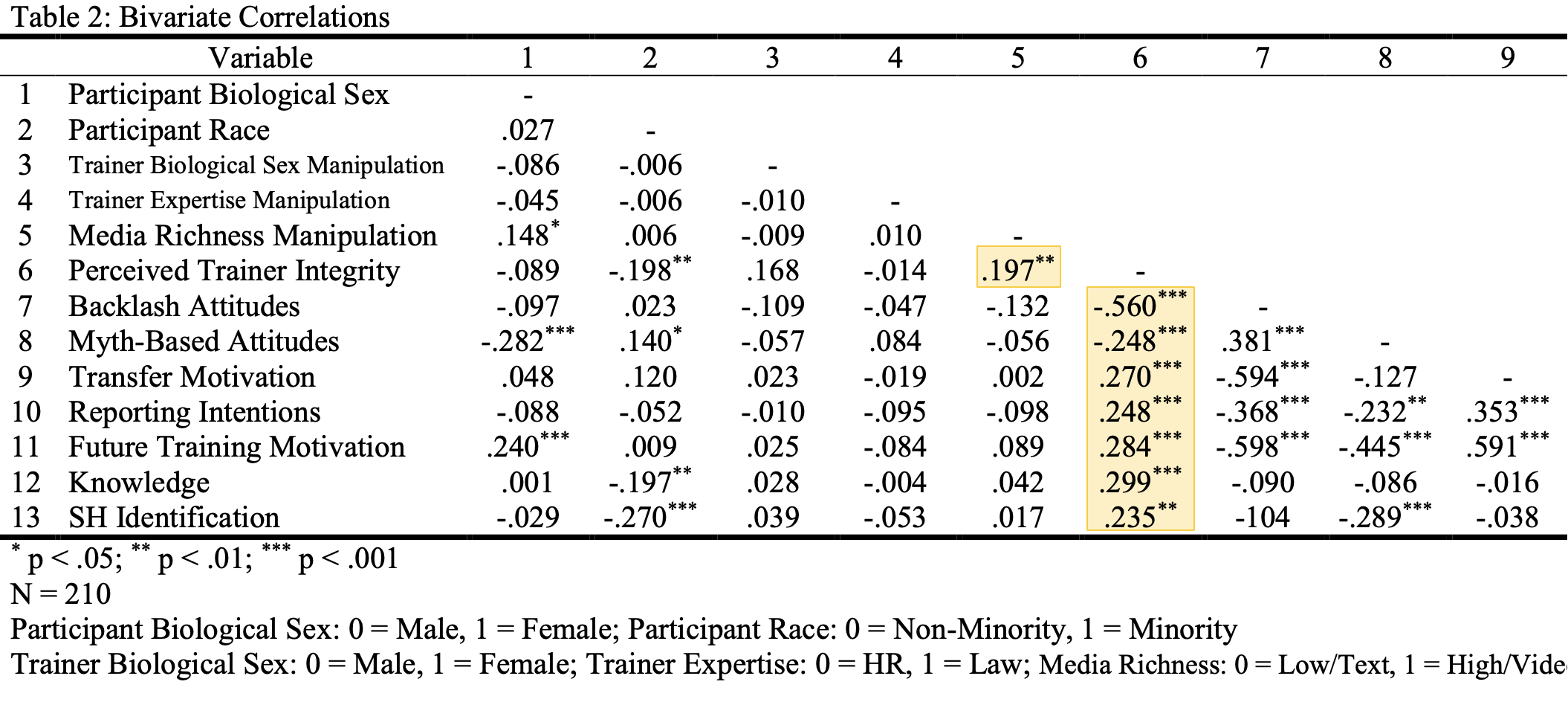


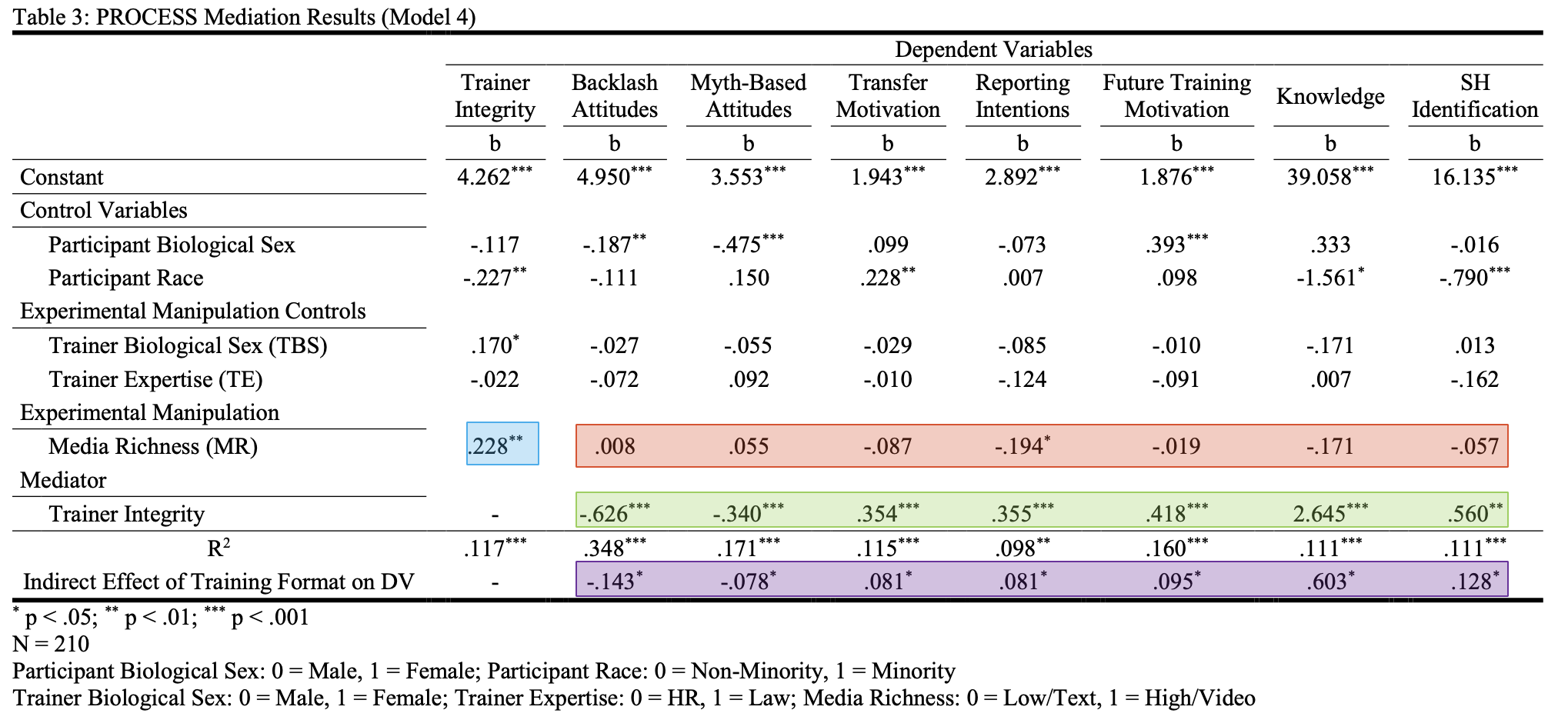

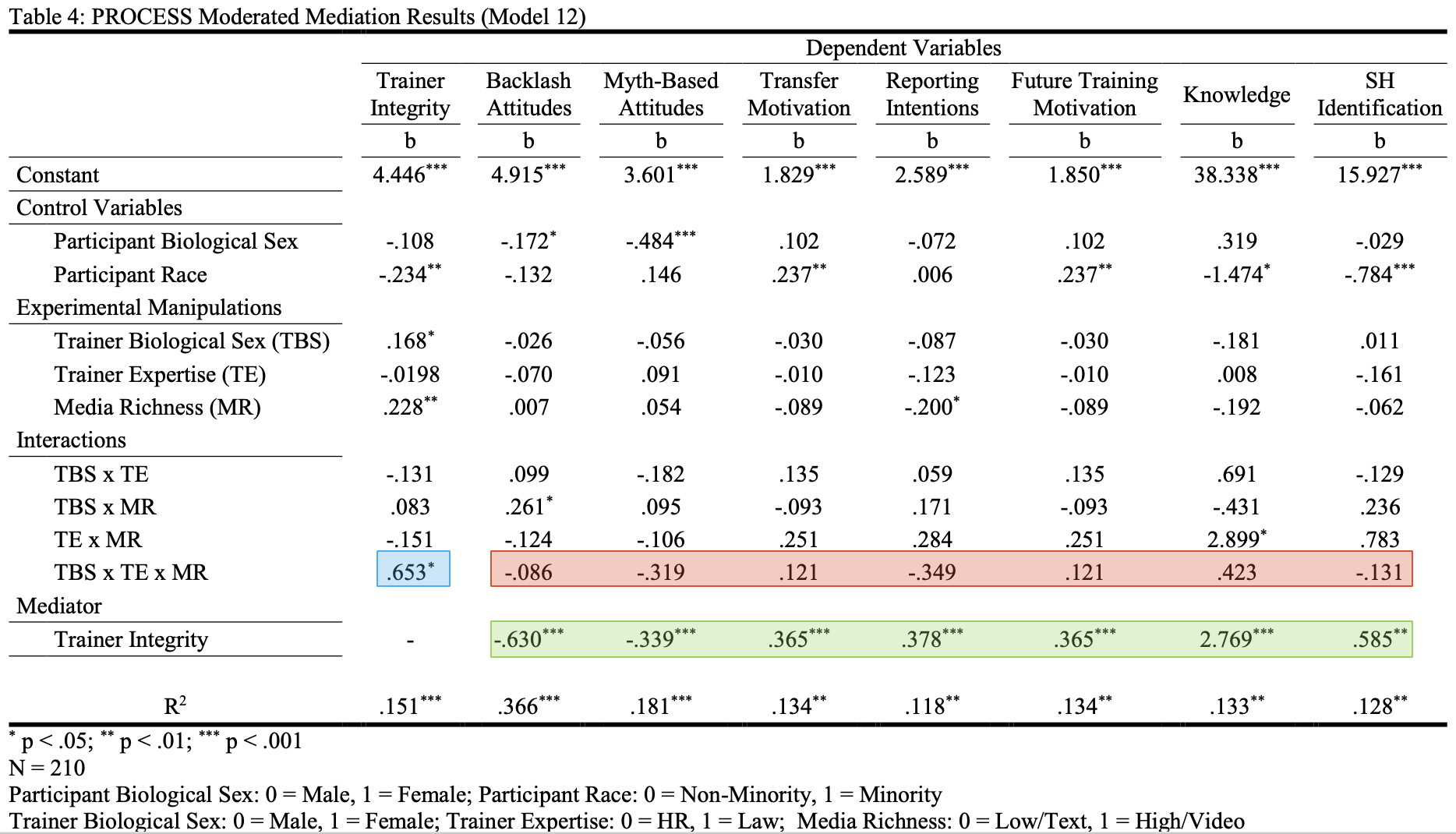
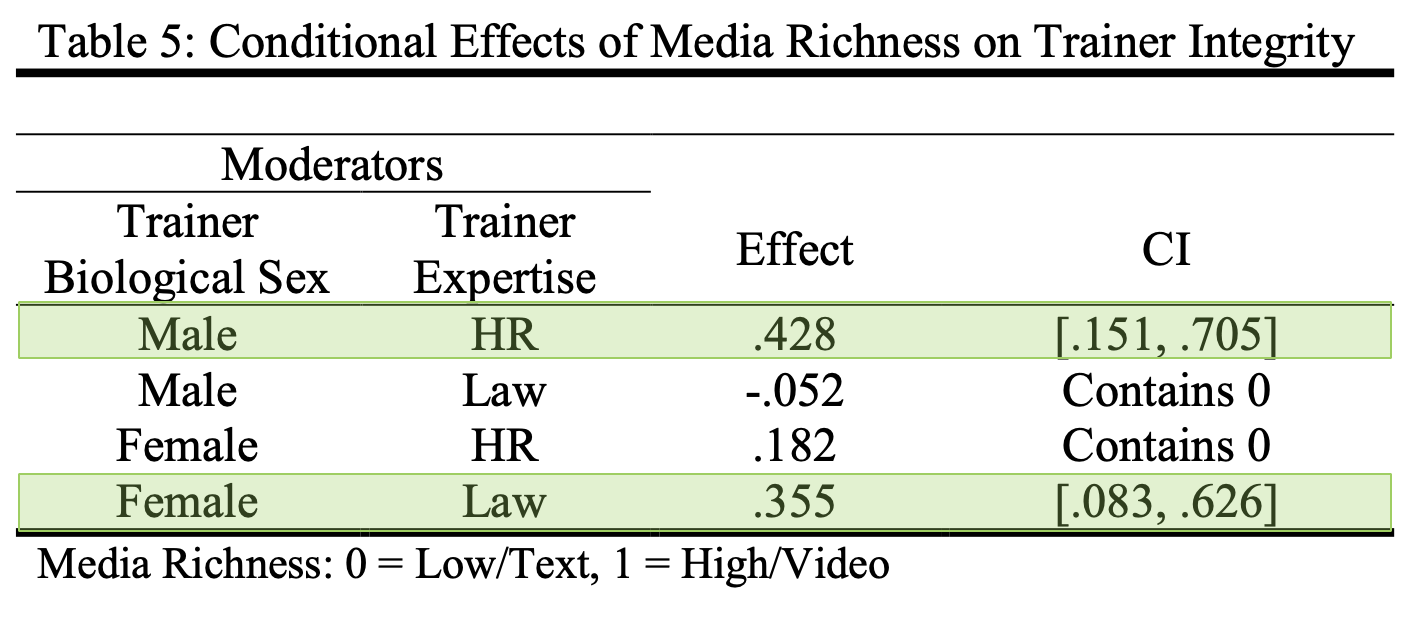

Summary
- Messenger gender-occupation incongruence is not directly related to perceptions of integrity
- Media richness attenuates the negative effect of gender-occupation incongruence on perceived integrity
- Perceived integrity significantly predicts all training outcomes
- Higher integrity perceptions are associated with better training effectiveness
Closing thoughts
- SH Training is unique to other forms of training
- Requires consideration of trainees’ biases in its design
- Perceived trainer integrity important component to training outcomes
- Video production is “worth it” for e-training programs
- Future research should continue examining SH training design elements through an interdisciplinary lens in collaboration with practitioners.